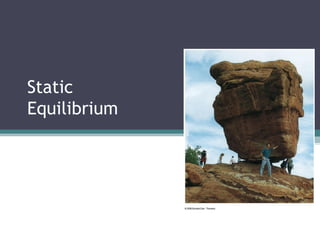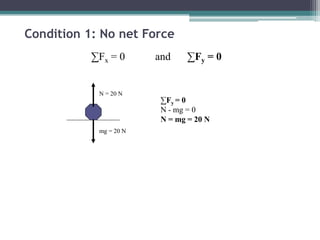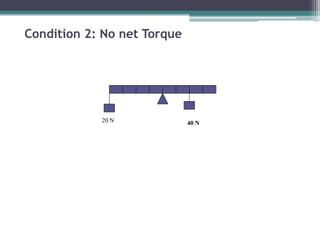The document discusses static equilibrium, where an object experiences no net forces or torques acting upon it. It defines static and dynamic equilibrium, and explores conditions for equilibrium through examples of masses attached to levers or hanging from rods. Key concepts covered include the definitions of force, torque, and their relationships. Torque is described as a twisting force that depends on the distance from the axis of rotation and the perpendicular component of the applied force.























































